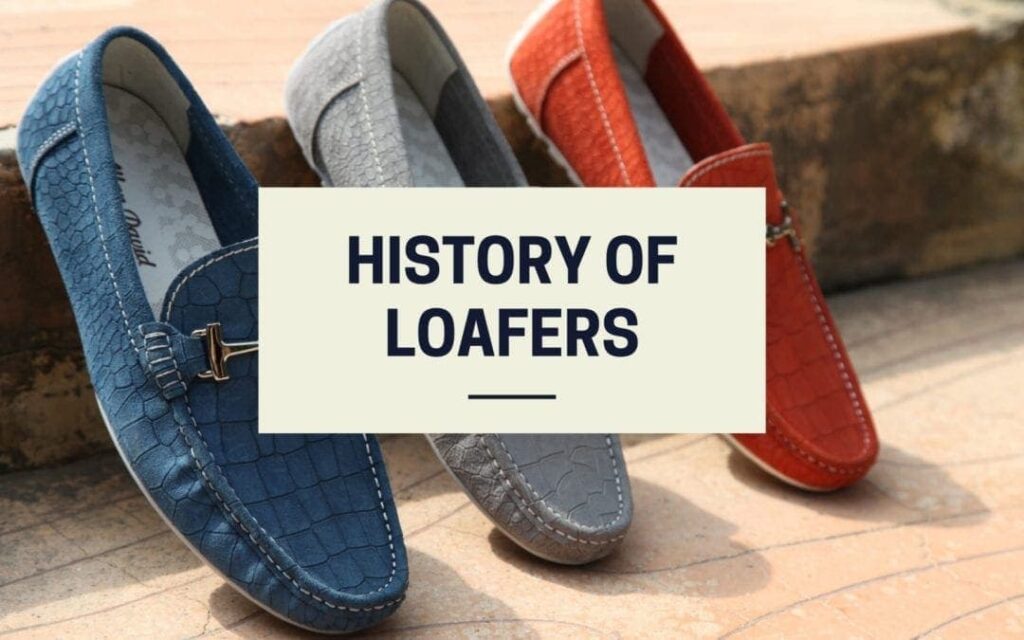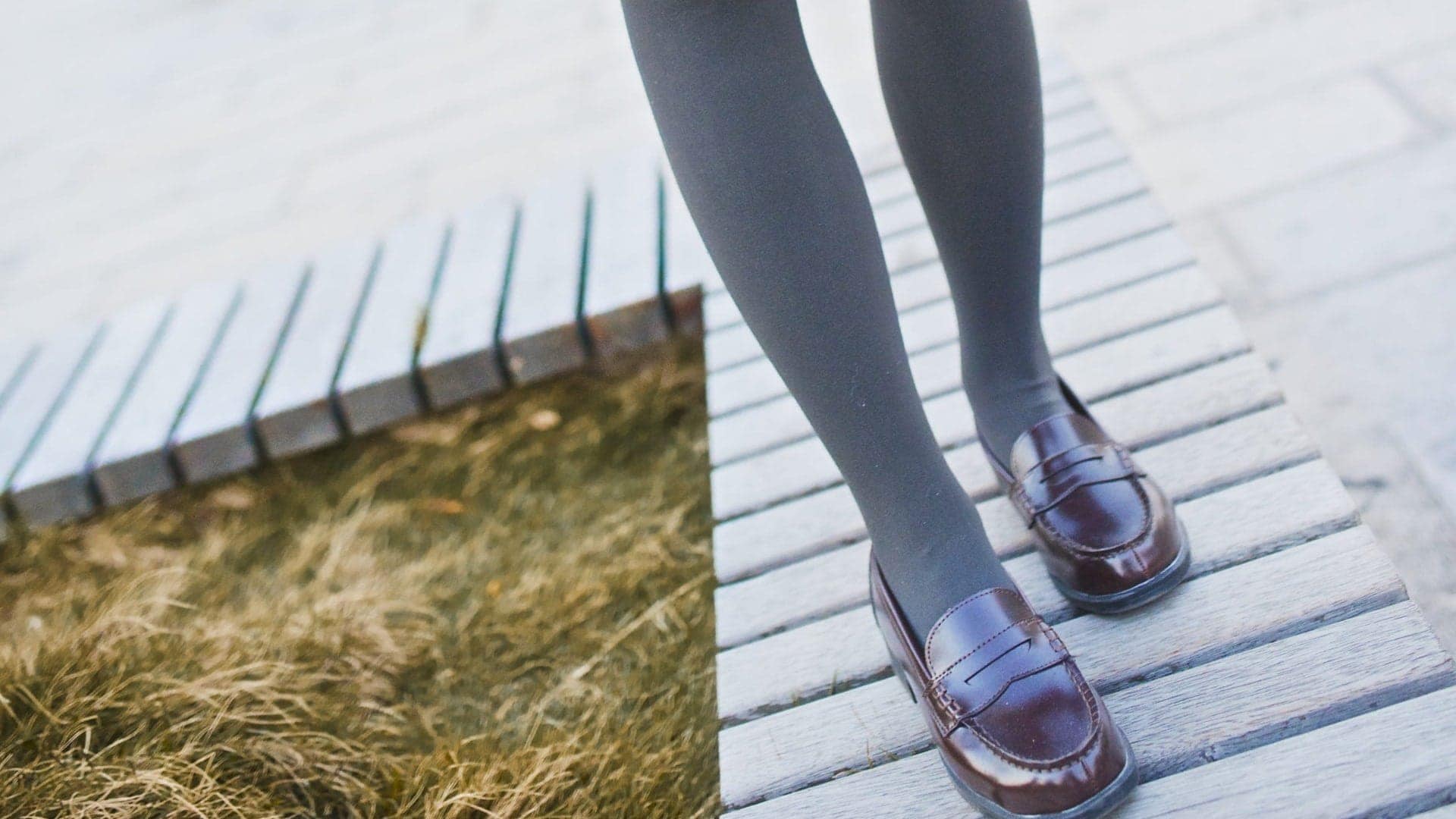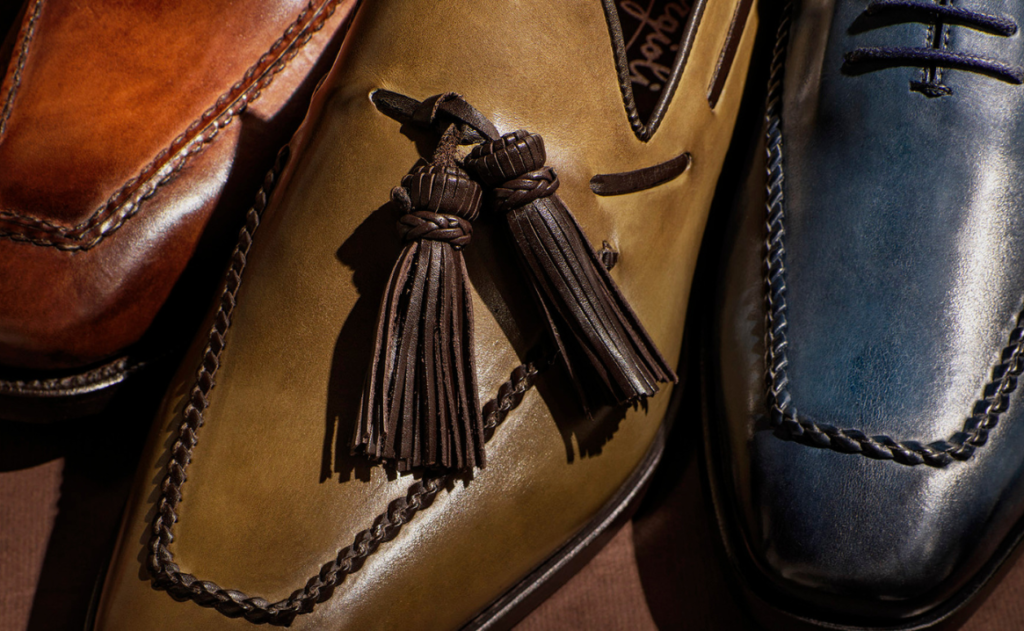History Of Loafers

What is the history of loafers? From Bass Weejun to Penny, from Tassels to Gucci loafers, discover the evolution of these popular shoes.
North American Indians, Norwegian milkers and Lapps. What do they have in common? You guessed it right: they are concurred to the creation of loafers.
With almost 100 years of life, the loafers are still a “must-have” in the closet of many fashion lovers. They started to spread in the 30s, with the design we all know, but their origins are much more ancient.
From North America To Norway
Even if the loafers nowadays are considered a symbol of elegance, their roots are actually pretty functional.
The primordial model of this type of shoe was created by the North America Indians. They used to bandage their feet with pieces of deerskins, extremely soft but also very resistant, in which a very flexible sole was included.
Almost at the same time, the Lapps also began to use a very similar shoe but made it from various pieces of leather sewn together. The Norwegian milkers and fishermen also adopted this type of shoe and made it famous around the world until it reached North America again.

The legend has it that some students, traveling to Scandinavia in the early 1900s, spotted Norwegian fishermen wearing a simple, comfortable type of shoe. They brought the style back to North America, where it spread until reaching industrial production.
Here the Spalding family started the production of a type of shoe that was inspired by those used by the Lapps and the Norwegian milkers, in 1932.
Weejun Loafers
Not long after this first production, in 1936, the American company GH Bass launches on the market the “Weejun Loafers” type of shoe. “Weejun” is actually short for Norwegian while Loafer stands for “shirker”: the main feature of this model was indeed the ease of wearing.
This will be us the minute social distancing is over. Shop on https://t.co/NFXILLWXmC. #WeejunsByMe #GHBass pic.twitter.com/cbzpD3XFAw
— G.H. Bass & Co. (@GHBass) July 27, 2020
The Weejun model included also a strap running horizontally across the vamp of the loafer: this strap was cut with a small opening in the center, that happened to be the perfect size for a small round object, like a penny. That’s where the wording penny loafers comes from!
The Spreading Across Cultures
The Loafers were not initially well accepted by the fashion critics, as the shoes were associated with slippers. The spreading of this type of shoe tells us another story: the loafers became standard must-have footwear of every man and woman from the late ’40s to the late ’60s.
Penny Loafers
The history of the loafers continues thanks to James Dean, Buddy Holly, and Elvis (and the fact that sneakers usually weren’t allowed inside the classroom).
The Penny Loafer became a trendsetter for teenage footwear. Bright, white socks completed the “Ivy League” look.

Moreover, in the 50s the famous actor and dancer Fred Astaire used to wear loafers with the frac, while performing tip tap: this helped the massive diffusion of the shoe.
The loafers thus became a symbol of elegance, shared by powerful and great artists, managers, and wealthy financiers.

In Italy the loafers began to spread in the 60s, while in the 70s they are confirmed as a luxury shoe made to be wear everyday, with an elegant or casual outfit.
Yacht Moccasin
Fratelli Rossetti played undoubtedly an important role in favoring their diffusion. The Italian fashion company reinterprets the loafers by replacing the strap with a metal application. They also treat the shoe skin by applying an original nuanced-antique effect.
In 1968, the Rossettis progressively developed the loafer following an aesthetic vision: the yacht moccasin is launched on the market. It is lined with sponge to be worn without socks and vary in the shape of a boot or a sandal.
Gucci Loafers
How not to mention the iconic Gucci Loafers: in 1953 Gucci created a loafer entirely inspired by the equestrian lifestyle. The result was the iconic shoe we know today: A simple leather loafer embellished with a metal horse. 60 years later the creative director Frida Gianni dedicated an entire exhibit at the permanent museum, the Gucci Museo.
Some Tips To Wear Loafers
Without any doubt, the history of the loafers drastically developed from the functional roots of the shoe. By the adoption in the Ivy League look, the shoe traveled through many fashion designers and through many styles. It has been paired with jeans, trousers, to the sockless style.
That’s why we want to give you some tips you could find useful and let you wear this iconic type of shoe flawlessly.
Loafers and jeans are classic. Be sure that your jeans are not excessively too long, or too baggy: the loafers request shorter side denim. You can also show a casual style with ripped jeans. Remember that the top half should match the bottom half if you choose to wear contrasting colors.
Another cool association is loafers and blazer. Here we suggest a fitted t-shirt with the blazer, while the trousers must always match the top in colors and shape.
Chinos and loafers combination is perfect for your trendy summer nights: for these occasions, the coolest colors for your chinos are blue, creme, and khaki. With a short or polo, and a belt your look will be exemplary.

Loafers and suits combine perfectly as bread and butter. The perfect trouser length is at the ankle. Socks are optional, take advantage of the adaptability of the loafers: you can look elegant without being deprived of comfort.
With the ability to slip on and off, the absence of laces, and the use of a wide variety of materials, the loafers are a perfect model of shoe for almost every occasion. Combining versatility and comfortability, they are confirmed as a must-have for every fashion lover.
If you liked the history of the loafers, be sure to check out the article on the history of the boots. Enjoy!

Why people buy (and will continue to buy) the handmade shoes in the shops?

How to understand the real quality of a handcrafted shoe?

The colors of handcrafted shoes: how to choose the right color for your brand?

